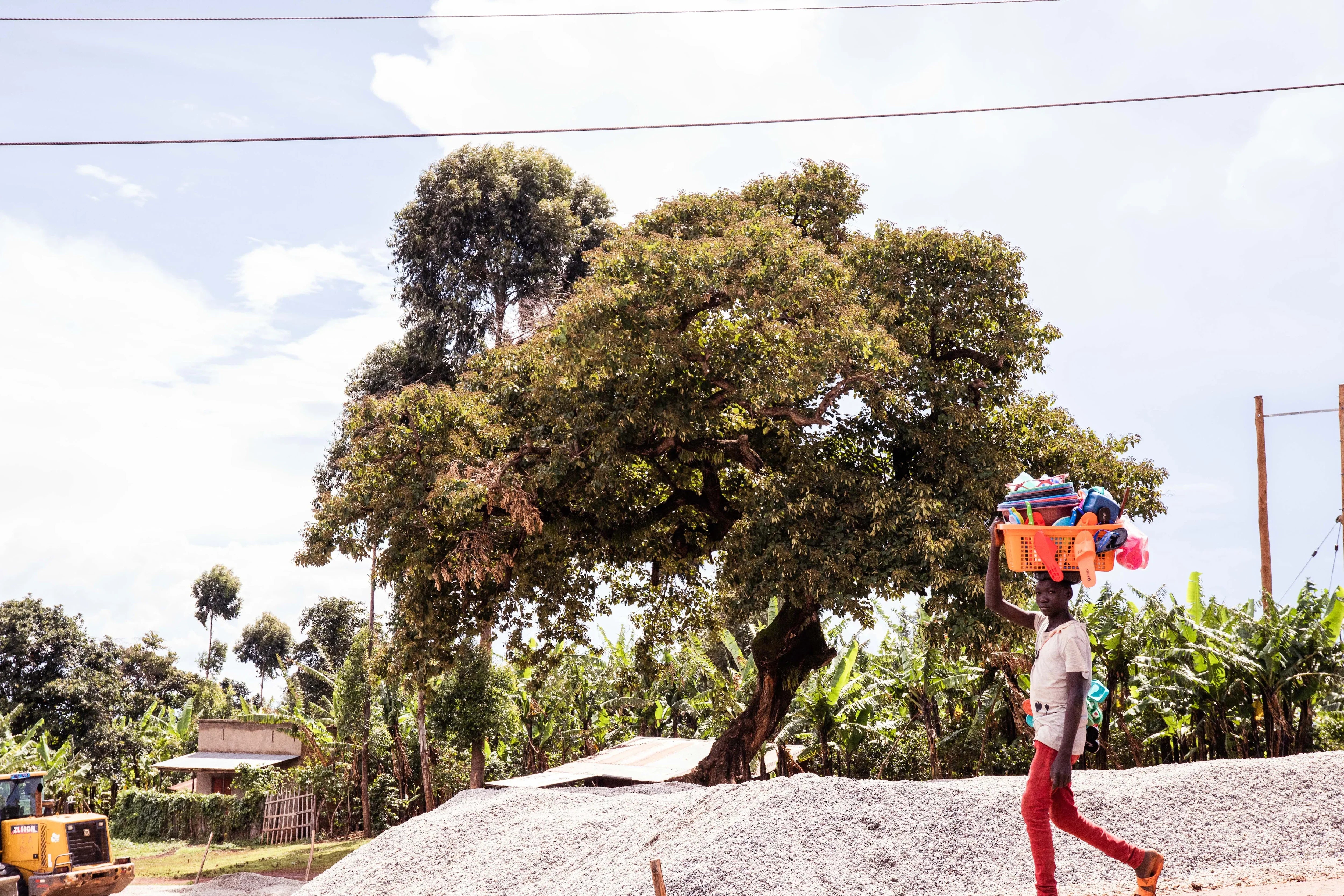What is agroforestry and how does it work?
Agroforestry is an innovative agricultural concept that combines trees, shrubs and crops on the same area. This system aims to harness the benefits of woody plants and shrubs for crop production. By integrating trees and shrubs into agricultural land, a more sustainable and productive system is created. Agroforestry is used in various regions around the world and offers a variety of environmental, social and economic benefits. But how exactly does this form of land management work and how does it differ from conventional agriculture?
Basics of Agroforestry
Agroforestry is based on the integration of woody plants, shrubs and arable crops on the same area. This combination creates a complex ecosystem that both protects the soil and improves the supply of nutrients. Strips of woodland and tree species native to the region are integrated into the management on purpose. These elements help to reduce soil erosion and promote biodiversity. In addition, the microclimate is improved, which has a positive effect on the growth of the respective crops.
Another important aspect of agroforestry is the use of woody plants and shrubs to improve the humus content in the soil. These plants help to provide organic material that serves as a natural fertilizer. This reduces the need for chemical fertilizers and promotes soil fertility in a natural way. In addition, agroforestry systems provide habitat for a variety of animal species, which increases biodiversity. Last but not least, the combination of arable and woody crops enables a diversified product range, which offers producers additional income channels or even opportunities for self-sufficiency.
Differences Between Agroforestry and Conventional Agriculture
Compared to conventional agriculture, agroforestry differs in the integration of woody plants and shrubs into agricultural land. While conventional agricultural practices often rely on monocultures, agroforestry promotes biodiversity and soil protection. The trees and shrubs in agroforestry systems help to stabilize the soil and prevent erosion. They also improve the microclimate and provide protection from extreme weather conditions. These multifunctional landscapes combine the benefits of agriculture and forestry in a sustainable system.
Another difference lies in the use of resources. Conventional agriculture often uses chemical fertilizers and pesticides to achieve high yields. Agroforestry, on the other hand, relies on natural methods to maintain soil fertility and control pests. Woody plants and shrubs play a key role in supplying nutrients to the soil and provide habitat for beneficial insects and birds. This ecological approach reduces the labor and cost of artificial inputs, leading to sustainable agricultural practices in the long term.
What are the Benefits of Agroforestry?

Social Benefits
Agroforestry offers numerous social benefits to producers. By diversifying agricultural production, they can expand their sources of income and improve their economic stability. Agroforestry systems enable the production of wood, fruits, nuts and other products that can be marketed in addition to traditional produce. This diversity not only offers farmers financial security, but also the opportunity to make their farms more resilient to market and climate fluctuations.
Another social benefit of agroforestry is the improvement of the quality of life in rural areas. The sustainable practices help to conserve natural resources and create jobs. By promoting agroforestry systems, communities can be strengthened and seemingly neglected regions can be revitalized. Coffee Annan is actively committed to training and supporting producers in order to continue to advance agroforestry practices.
Environmental Benefits
The environmental benefits are diverse and far-reaching. By integrating woody plants and shrubs into agricultural areas, soil erosion is significantly reduced. The root systems of the trees and shrubs stabilize the soil and prevent the loss of valuable nutrients. In addition, the woody plants contribute to the formation of humus, which improves soil fertility in the long term. The agroforestry systems also promote biodiversity by providing habitat for various plant and animal species (see below).
Another environmental benefit of agroforestry is the improvement of the microclimate. The trees and shrubs in agroforestry systems provide shade and protection from extreme weather conditions, which has a positive effect on the growth of crops. They also help reduce the CO2 content in the atmosphere by storing carbon. This sustainable land use method therefore makes an important contribution to climate protection. By promoting biodiverse landscapes and reducing the use of chemical fertilizers, agroforestry contributes to a healthier ecosystem.
Benefits for Biodiversity
Agroforestry offers significant benefits for biodiversity by creating diverse habitats for plants and animals. The combination of woody plants, shrubs and crops creates complex ecosystems that promote biodiversity. These agroforestry systems provide habitat for numerous animal species, including birds, insects and small mammals. The plants in the agroforestry provide shelter and food sources, which helps maintain biodiversity.
Another benefit for biodiversity is the reduction in the use of chemical fertilizers and pesticides. Agroforestry systems rely on natural methods for soil improvement and pest control, which reduces environmental impact. This sustainable land management contributes to the preservation of natural resources and the creation of a healthy ecosystem. Here, too, Coffee Annan is actively committed to increasing biodiversity in the growing regions.
Economic Benefits
The economic benefits of agroforestry are just as significant as the environmental ones. By diversifying production, farmers can develop additional sources of income. For example, additional wood and fruit yields from the trees and shrubs can be marketed. This creates a wider range of products and reduces financial risk. In addition, farmers can benefit from the environmental advantages by having to spend less money on chemical fertilizers and pesticides.
Another economic potential of agroforestry lies in the long-term improvement of soil quality. Increased soil fertility through the use of humus and natural nutrients leads to higher yields and more stable harvests. This increases the economic sustainability of farms. In addition, agroforestry practices can reduce labor input, as the plant communities in agroforestry systems are often more resilient to pests and diseases. These benefits make agroforestry an attractive option for producers looking for sustainable and economically viable alternatives to conventional agriculture.
Agroforestry in Coffee Production
Agroforestry plays a significant role in coffee production, especially in tropical and subtropical regions. By incorporating shade trees and shrubs into coffee plantations, the microclimate is improved and soil health is promoted. These trees not only provide protection against erosion and extreme weather conditions, but also help maintain soil fertility. In addition, farmers can benefit from the additional income from the trees' wood and fruit, which increases their economic stability.
Another benefit of agroforestry systems in coffee production is the promotion of biodiversity, as already discussed above. The shade-giving trees provide habitat for numerous bird and insect species, which in turn contribute to natural pest control. This reduces the need for chemical pesticides and promotes a healthy ecosystem. In addition, the trees contribute to carbon storage, which has a positive impact on climate protection. This sustainable management method enables coffee farmers to produce high-quality coffee while protecting the environment.
All our coffees are grown in agroforestry - try here .
FAQ
What is agroforestry and how does it work?
Agroforestry is an integrated system that combines agricultural crops and woody plants to promote productivity, sustainability and ecological health. In agroforestry systems , trees and shrubs are managed together with arable crops and, where appropriate, livestock in a harmonious system. The concept of agroforestry aims to increase biodiversity, reduce soil erosion and improve the microclimate.
What are the benefits of agroforestry for coffee production?
Agroforestry offers numerous benefits for coffee production , including improving soil quality by promoting humus formation and nutrient cycling. The integration of woody plants can provide shade, which is particularly important for coffee plants as they are sensitive to direct sunlight. In addition, agroforestry can help reduce pests and diseases, leading to higher yields.
How is an agroforestry system for coffee established?
An agroforestry system for coffee is set up in several steps. First, the appropriate site is selected, followed by the selection of suitable tree species and shrubs that harmonize with the coffee plants . It is important to select the right trees that not only provide shade, but also improve the soil's nutrient supply and possibly also offer socio-economic benefits.












